Montage
advertisement
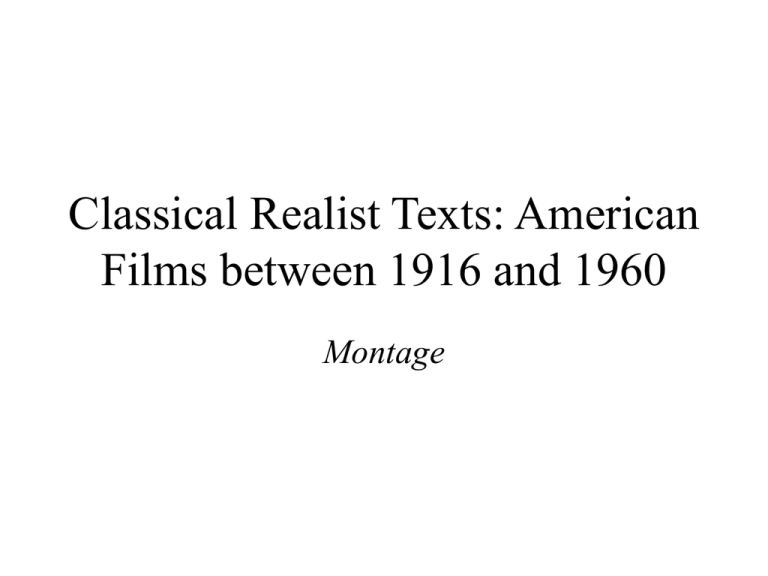
Classical Realist Texts: American Films between 1916 and 1960 Montage Table of Contents 1. Mise-en-scéne in classical American films 2. Montage in classical American films Mise-en-scéne in classical American films • Mise-en-scene ought to be motivated as narrative is. The chain of cause and effect dictates mise-en-scène (what and how to shoot). • e.g. When a character is a hero, he may be placed in the centre of the frame. When he walks into a room, the camera also moves with him. When he is walking in the darkness, no strong light is cast on his face. Mise-en-scéne in classical American films • F.W. Murnau, Sunrise: A Song of Two Humans (1927) • Travelling shot from a tram • Motivated: when the characters and the vehicle on which they are on move, the camera moves. Montage in Classical American Films • As mise-en-scène, montage must help a narrative move on without distracting the attention of the viewer from it. • Smooth flow from a shot to the next shot CONTINUITY Editing Montage in Classical American Films • Continuity editing PURPOSES • To tell a story coherently and clearly; • To map out the chain of actions in an undistracting way Montage in Classical American Films GRAPHIC CONTINUITY • Shot-Reverse Shot • The figures are balanced and symmetrically deployed over shot-reverse shot. • The overall lighting tonality remains constant over shots. Continuity Editing Continuity Editing Montage in Classical American Films EYE-LINE MATCH • Shot A presents someone looking at something off-screen; shot B shows us what is being looked at by him/her. In neither shot are both looker and object present. Montage in Classical American Films • Eye-line match • Alfred Hitchcock’s Rear Window (1954) • In one shot Jefferies looks through his camera and in the next shot what he is watching is shown. Montage in Classical American Films 180-DEGREE RULE • Two characters (or other elements) in the same scene should always have the same left/right relationship to each other. • The axis of action (or centre line, 180º line) is assumed between two characters. Then, this axis of action determines a half-circle, or 180º area, where the camera(s) can be placed to present action. Montage in Classical American Films • Examples of the scenes which blatantly ignore the 180-degree rule • Jean-Luc Godard, A bout de souffle (1960) • Ozu Yasujiro, Tokyo Story (1953) Montage in Classical American Films TEMPORAL CONTINUITY: • Time, like space, is organized according to the development of the narrative. • ORDER, FREQUENCY, DURATION Montage in Classical American Films • ORDER • Continuity editing typically presents the story events in a 1-2-3 order. • With the exception of occasional flashbacks. • Christopher Nolan’s Memento: its narrative told in a backward 3-2-1 order Montage in Classical American Films • FREQUENCY • Classical editing also typically presents only once what happens in the story. • Non-classical montage • Sergei Eisenstein’s Battleship Potemkin (1925) • Spike Lee’s Do the Right Thing (1989) Montage in Classical American Films • DURATION • In the classical continuity system, story duration is seldom expanded or shortened. The story time is equal to the film time. • Story time is extended in the famous Odessa Steps scene in Sergei Eisenstein’s Battleship Potemkin (1925) Montage in Classical American Films • JUMP CUT • A device to compress (dead) time. (A man enters a large room at one end and must walk to a desk at the other end. Jump cut eliminates most of the action of traversing the long room.) Montage in Classical American Films • Unobtrusive jump cut - a cut which does not make the viewer aware of it. • Excess dead time must smoothed over either by cutting away to another element of the scene or by changing camera angle sufficiently so that the second shot is clearly from a different camera placement. Expressive Montage • Obtrusive, jugged jump cut • An action is abruptly interrupted without it is completed. • Jean-Luc Godard, A bout de souffle (1960) • Lars von Trier, Dancer in the Dark (2000) • One of the avant-garde’s favourite expressive techniques. • Making artificiality evident. Expressive Montage • Cross cutting • Alternates two or more lines of actions taking place in different places simultaneously. • Cross cutting could be employed to enhance reality and truth effects, but is generally associated with more formalist editing. • Edward Yan’s Yi, Yi (A One and a Two, 2000) • Francis Ford Coppola, Godfather Expressive Montage • David Lean as a master editor • Lawrence of Arabia (1962) • Formative editing jumping thousands of miles in space over two shots Expressive Montage • The most audacious editing • 2001 Space Odyssay • Time travels million years in one editing.
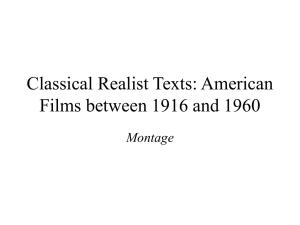
![[Lecture 17] soviet montage 3 for wiki](http://s2.studylib.net/store/data/005394749_1-74b063163f399dbb4123cebb7c05cab3-300x300.png)
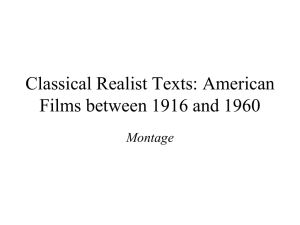
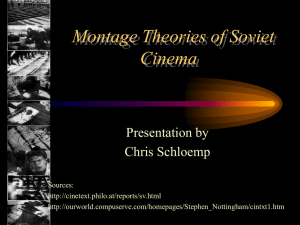
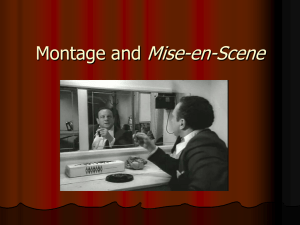

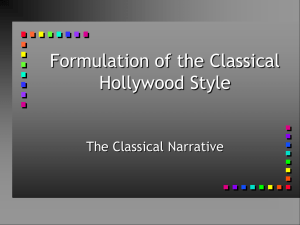

![Beyond the shot [the cinematographic principle & the ideogram]](http://s2.studylib.net/store/data/005478862_1-b57d7625e5fa0aeba060869b1aae8735-300x300.png)
